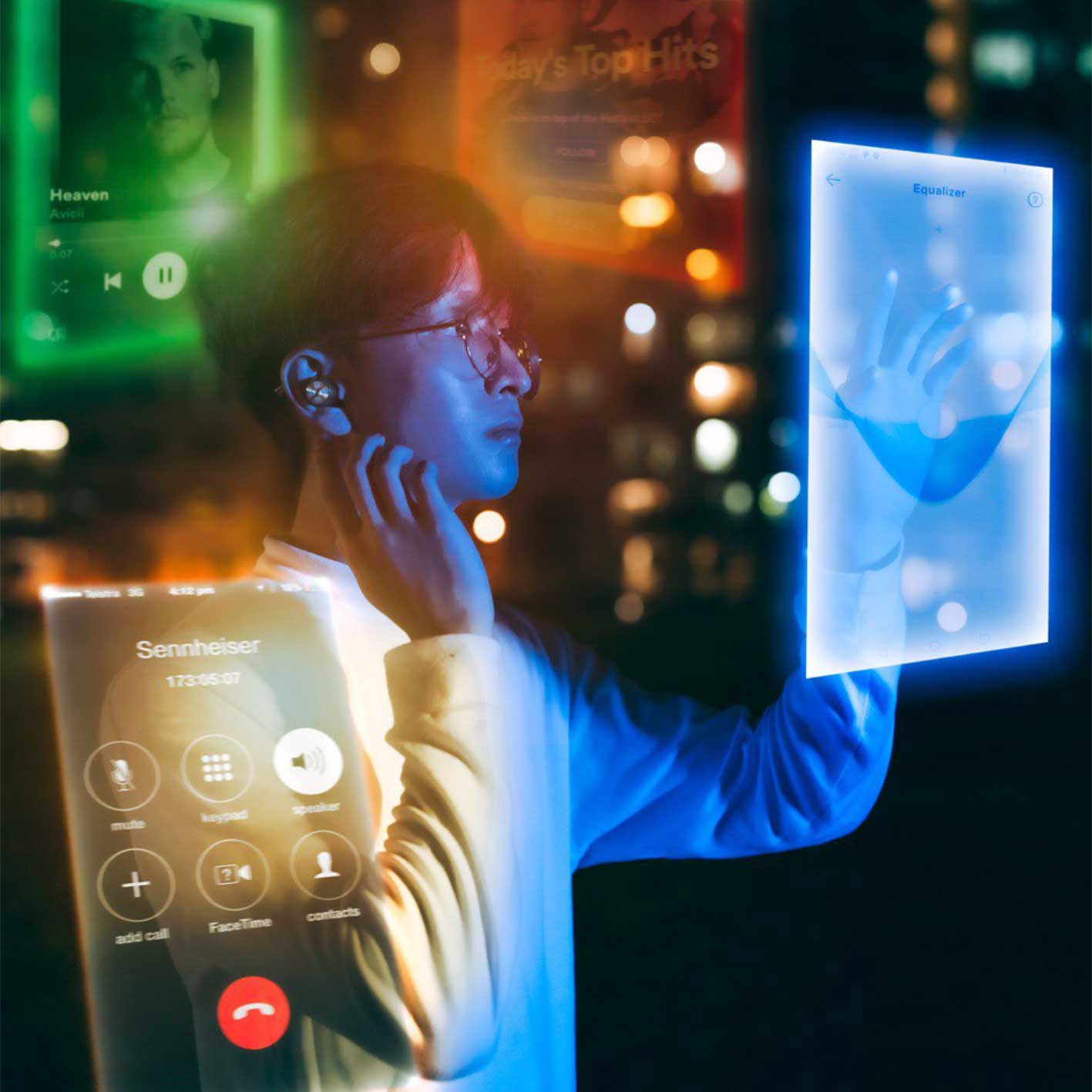During the pandemic, almost all aspects of our lives shifted online.
From socialising and shopping, to school and work. After almost 24 months, we’ve become accustomed to living an almost completely digital life, and it’s predicted we’ll continue these habits well after the pandemic. 76% of people say their everyday life and activities depend on technology, according to a Wunderman Thompson report.
This shift in lifestyle means brands and platforms have upped the ante on their digital efforts. Platforms like Instagram and TikTok have zeroed in on social commerce, live shopping and AR features. Brands like Farfetch are investing in digital fashion. IKEA has AR tools so shoppers can try furniture before they buy, and luxury brands like Balenciaga and Moschino have collaborated with online video games.
The next step? The metaverse. It’s the latest buzzword to capture our attention and it’s popularity peaked in 2021. The number of searches for the word jumped more than 10x this year, according to Google Analytics. In this article, we answer your metaverse FAQs and figure out what it all means for digital content creators.

What is the metaverse?
Think of it as a virtual reality that allows you to shop, socialise and play, all in the one, virtual space. However, it’s not just in one, singular space on the internet. It’s multiple different spaces, created by multiple different platforms and brands. Everyone and anyone that can create their own metaverse will have their own for consumers to immerse themselves in.
What does the metaverse look like?
Just like how the metaverse isn’t just one, singular space on the internet, it doesn’t look the same for each and every platform that’s developing their own.
Mark Zuckerberg describes it as a “virtual environment you can go inside of, instead of just looking at on a screen.” His company Meta, formally known as Facebook, has begun building their own metaverse, hence the name change. Their ‘Horizon Workspaces’ allow work colleagues to virtually connect and collaborate as personalised avatars. A suite of AR filters and effects are available to use across both Instagram and Facebook. Their new Smart Glasses, in collaboration with Ray-Ban, allow you to listen to music, take calls and record and share the world around you. And it’s looking like they’re creating smart watches, after this leaked photo was found.
The metaverse is looking a little different for brands. As one of the first major brands to tackle this virtual world, Nike has launched its own, called ‘Nikeland’, within the popular online game, Roblox. Users can play sports and compete against each other, and they’ll also be rewarded with virtual Nike garments to dress their avatars in. However reports from Business Insider show that early adopters Nike has been prepping for the metaverse since 2018! From the Nike patents Business Insider found, we can expect to see intelligent electronic shoes, digital sneakers, virtual drops and avatars from the sportswear brand.
Disney also recently announced their plans to create a ‘Disney metaverse’ that will “connect the physical and digital worlds even more closely, allowing for storytelling without boundaries”, according to Disney Chief Executive, Bob Chapek. No further details have been released yet, however Chapek indicated that the company’s streaming service, Disney+ would be involved.

Who will be there?
The representations of people we’ve seen in the metaverse really do vary. From Nikeland’s minimal figurines, to Mark Zuckerberg’s cartoon avatar. But there are some companies, like Soul Machines, already designing realistic ‘people of the metaverse’ who look incredibly lifelike and can “embody the soul of a brand”. These virtual people would be used in things like customer service, promotional videos and education.
The company is using autonomous animation to ensure their speech isn’t pre-recorded. This makes these digital people speak more humanly, allowing for more natural interactions.
What do the opportunities look like for creators in the metaverse?
The promise of the metaverse will likely see influencer marketing become a more immersive experience. That’s what Vamp’s co-founder Aaron Brooks predicts for 2022. “With the equal importance of sound and visual on TikTok, the emergence of Virtual Reality (VR) and Augmented Reality (AR) and the promise of the metaverse, social media is set to become a more entertaining and valuable place for audiences to connect and engage with creators.” These developments offer opportunities for deeper connections, so there’s endless possibilities to create fun, multi-dimensional content as a way to get closer to your audience.
The metaverse will also provide creators with an entirely new way to collaborate with each other. Food influencers would be able to cook together, travel bloggers could share experiences, MUAs will be able to create looks side-by-side and so much more.
Much of the metaverse is still a mystery as brands and platforms just start to get their heads around it. But one thing you can be sure of is that content creators will be the early adopters leading the way and helping brands build trust with their audiences. Brands will be able to work with creators to find exciting ways to tell their story within the new, digital world.

